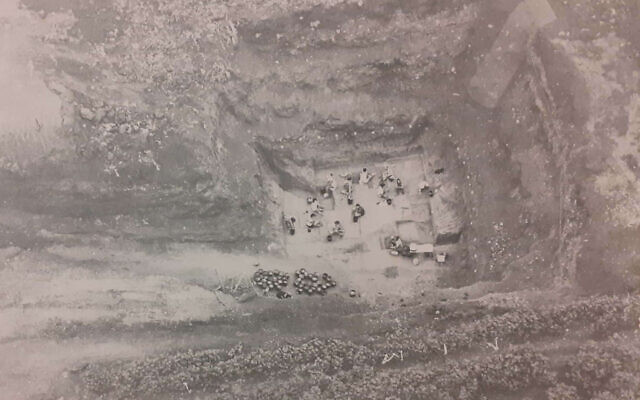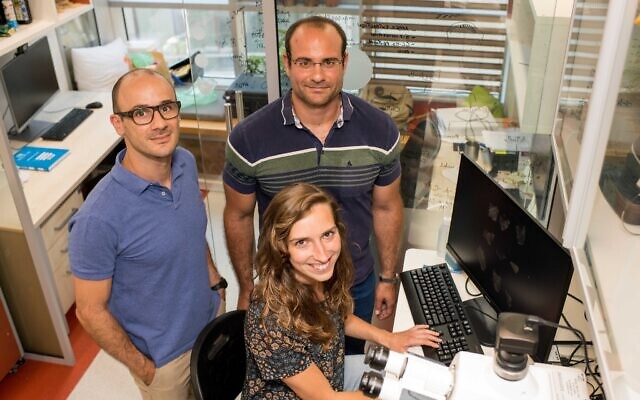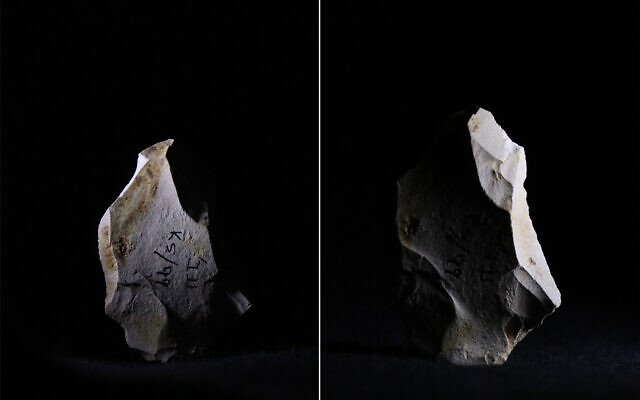
While the theory is widely accepted in the academic community, researchers have found it difficult to find evidence of fire use at the early stages of humans’ evolutionary development, and thus do not have the necessary data to fully support it.
Monitoring Desk
Tel Aviv
Using state-of-the-art artificial intelligence, researchers in Israel have been able to uncover some of the earliest evidence for the use of fire, dating back at least 800,000 years ago.
In an article published in PNAS Science Journal, Weizmann Institute of Science researchers detailed the advanced, innovative method that they have developed and used to detect nonvisual traces of fire, giving a rare glimpse into the lives of early humans.
Archaeologists believe that the controlled use of fire by ancient hominins – a group that includes humans and some of our extinct family members — developed around a million years ago.
The prevailing theory, called the “cooking hypothesis,” states that the use of fire was crucial for the evolution of homo sapiens, with flames not only enabling the creation of more sophisticated tools but also making food safer to eat and increasing its nutritional and digestive benefit — providing more nutrients for brains to develop and grow.

While the theory is widely accepted in the academic community, researchers have found it difficult to find evidence of fire use at the early stages of humans’ evolutionary development, and thus do not have the necessary data to fully support it.
Traditional archaeological methods allow for the discovery of fire usage to only as far back as some 200,000 years ago, since researchers rely mainly on modifications to material by heat, for example color changes.
So far, evidence of fire use dating back to 500,000 years ago has only been found in five sites around the world, and data is sparse.
“We may have just found the sixth site,” said Dr. Filipe Natalio of Weizmann’s Plant and Environmental Sciences Department.
Natalio had previously worked with Dr. Ido Azuri, of Weizmann’s Life Core Facilities Department, to discover evidence of controlled burning dating back to between 200,000 and 420,000 years ago at several archeological sites in Israel using AI and spectroscopy. That partnership served as the basis for the latest project.
Joined by PhD student Zane Stepka, Dr. Liora Kolska Horwitz from the Hebrew University of Jerusalem and Prof. Michael Chazan from the University of Toronto, Canada, the team set out on an expedition to the Evron Quarry in northern Israel — an open-air archaeological site in the Western Galilee that was first discovered in the mid-1970s.
Previous archeological work at Evron, led by Prof. Avraham Ronen, uncovered 14 meters (45 feet) of animal fossils and tools from the Paleolithic era, dating back to between 800,000 and 1 million years ago, which made it one of the oldest sites in Israel.

However, researchers did not discover any evidence at the site of fire use.
With ash and charcoal degrading over time, the finding of such evidence at the site is close to impossible.
Before arriving at Evron, the team began by updating and advancing the AI models they have used before.
“We tested a variety of methods, among them traditional data analysis methods, machine learning modeling, and more advanced deep learning models,” said Azuri, who headed the development of the models.
“The deep learning models that prevailed had a specific architecture that outperformed the others and successfully gave us the confidence we needed to further use this tool in an archaeological context having no visual signs of fire use,” he said.
The main benefit of using AI is that it can analyze the chemical composition of materials and from there estimate the templates they were heated in.

With an accurate AI method in hand, the team could start fishing for molecular signals from the stone tools used by the inhabitants of the Evron Quarry almost a million years ago.
An analysis for the heat exposure of 26 flint tools previously found at the site showed some exceeding 600°C, with a tusk of an extinct elephant also showing signs of heating.
Besides being the clearest evidence for ancient fire usage at the site, the researchers said that the presence of the heat signature could also be evidence of ancient hominids’ experimentation with different materials.
The team believes that the technique could be employed not only to identify the use of fire, but serve as a window into the origin of its implementation by early humans.

“Especially in the case of early fire,” said Stepka, “if we use this method at archaeological sites that are one or two million years old, we might learn something new.”
“It was not only a demonstration of exploration and being rewarded in terms of the knowledge gained,” said Natalio, “but of the potential that lies in combining different disciplines: Ido has a background in quantum chemistry, Zane is a scientific archaeologist, and Liora and Michael are prehistorians. By working together, we have learned from each other. For me, it’s a demonstration of how scientific research across the humanities and science should work.”
___________________
Courtesy: Times of Israel